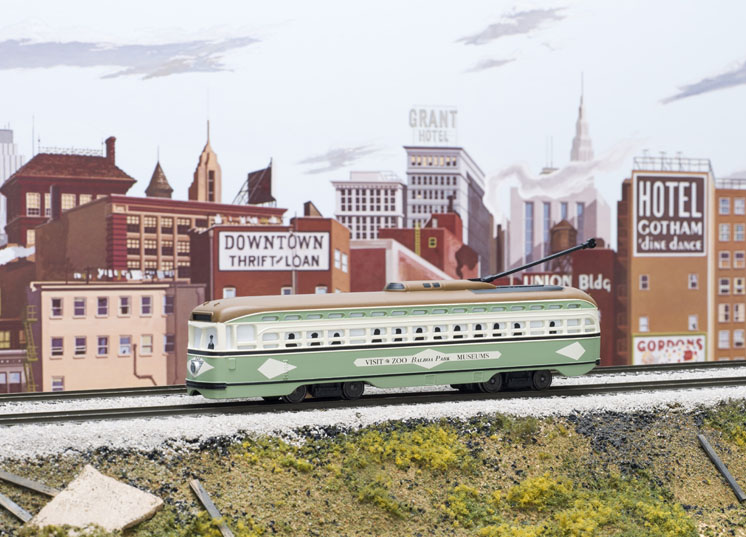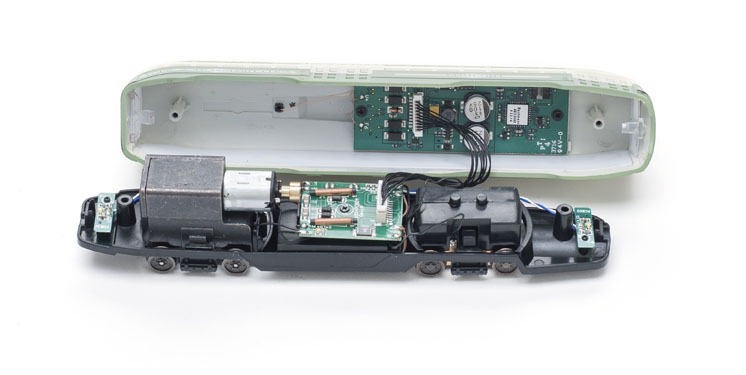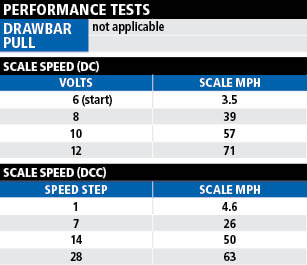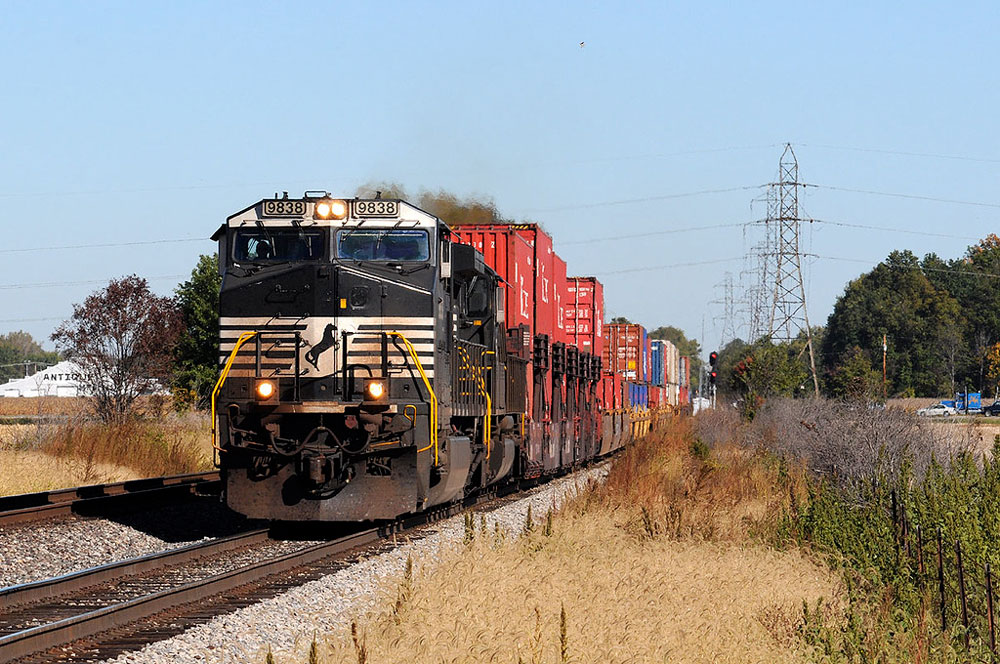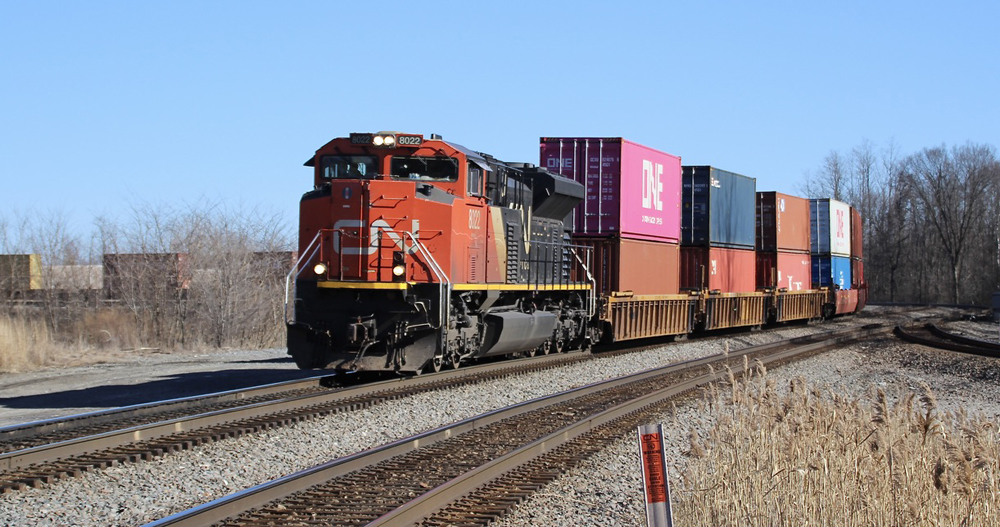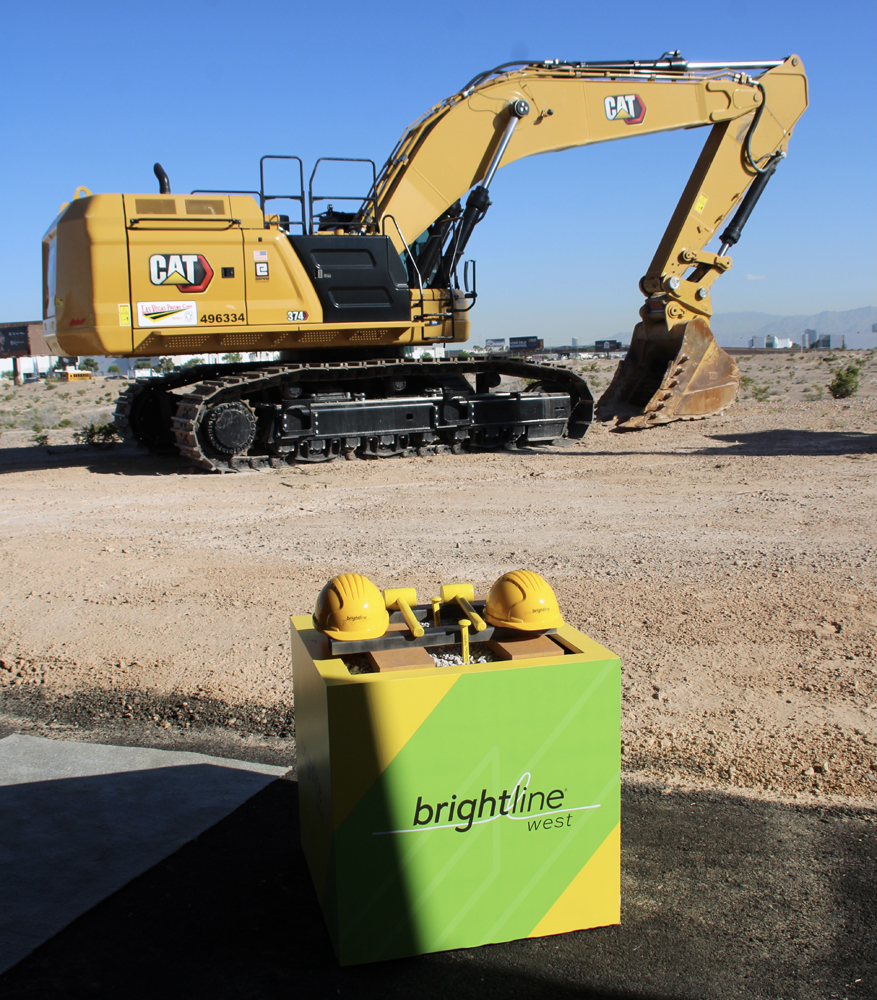President’s Conference Committee (PCC) streetcars were an attempt to build the first standardized streetcar. The cars, built just before and after World War II, got new life in the 1970s and ’80s when they were rebuilt for continued service with modern propulsion systems.
So it is with Bachmann’s PCC model. First introduced in the 1980s, the model is back with a new drivetrain that sets the body at the correct ride height, plus a Digital Command Control (DCC) SoundTraxx Sound Value decoder that also operates on direct current (DC).
The President’s Conference Committee was a group of traction company presidents that wanted to find ways to save money as the demand for streetcar service waned in the 1920s and ’30s. Streetcars were essentially custom built for each company to meet local conditions, driving up costs.
There was little hope that a standard design could be developed. But the committee eventually created a standard set of parts that could be used to build streetcars for most any situation, and at a savings compared to the custom-built cars that preceded them.
Differences in PCC cars involve the side window arrangement – prewar cars had tall, wide windows, while postwar cars had shorter, narrower windows with small “standee” windows above them. The rear windows also had different shapes. Windshields were angled back at 12 degrees in the original specification, but motormen complained of glare from interior lights, so the postwar design offered a 30-degree slope.
Two builders, Pullman-Standard and the St. Louis Car Co., produced PCC cars. Production began in 1936, with the Brooklyn & Queens Transit Co. receiving the first car. The final cars were sold to the San Francisco Municipal Ry. in 1952. Many of the cars are still in service after extensive overhauls.
Bachmann’s model is of a postwar car built for the Philadelphia Transit Co. (PTC) in 1948. The car is a standard 46 feet long with two sets of doors on the curb side and the later 30-degree slope on the windshield. The model has the correct tall rear windows of the last order for new PCC cars delivered to PTC.
Although this model’s body shell tooling has been around for a while, the guts of the trolley are all new. Bachmann has rectified the high-water look of its original model, resulting in a model that sits within scale inches of the correct 10′-27⁄8″ height above the rail head.
The model’s overall length is slightly short; cars with 30-degree windshields were 46′-53⁄8″ long to accommodate the windshield slope, but the model scales to 46 feet long. All other dimensions match drawings in PCC Cars of the United States; A Book of Plans-Variations of an American Classic by Joseph S. Zen-Ruffinen (East Penn Traction Club, 2009).
Removing the chassis is a simple process; two screws on the bottom hold it to the shell. A plastic frame carries three circuit boards and a downward-facing speaker mounted between the trucks.
The front truck is plastic and has brass wipers to collect current from the blackened, turned-metal wheels. The rear truck is die-cast metal and carries a small can motor with an even smaller brass flywheel.
The SoundTraxx Sound Value decoder is mounted in the roof of the body shell, connected to a printed-circuit (PC) board on the frame with a 10-pin connector. The PC board in the middle of the frame has surface-mount light-emitting diodes (LEDs) for interior light. Small PC boards at the ends of the frame have surface-mount LEDs for headlights and taillights.
Another micro LED is concealed in the end of the trolley pole to simulate sparks between the pole and overhead trolley wire. The trolley pole isn’t designed to collect current, doesn’t swivel, and can’t be lowered.
The body shell is a one-piece casting. The windows are fitted with translucent plastic sheets that feature silhouettes of passengers and a motorman in the style of Lionel O gauge passenger cars. The thickness of the body shell is apparent because the translucent plastic is fitted to the inside of the shell.
Our sample depicts the San Diego Metropolitan Transit System’s restored PCC car no. 529. The paint is evenly applied, with sharp separations between colors. The paint scheme has been modified slightly to accommodate the differences between the model’s Philadelphia prototype and San Diego’s refurbished PCC car, which operates with a pantograph, among other differences.
I started testing in DC. The lights and sound came on steadily at 5V, and the car started moving at 6V at 3.5 scale mph. Top speed in DC was 71 scale mph, much faster than any streetcar was likely to go. In DC, the motor-generator sounds began at startup, and the bell rang twice before the car moved forward and three times before it moved in reverse. As per the prototype, there is no horn or whistle. The LED on the trolley pole illuminated randomly and was accompanied by a sparking sound.
In DCC, the trolley started moving in speed step 1 at 4.6 scale mph. The instruction sheet didn’t include information about the trolley’s functions, so I looked on the Bachmann website and found a short video where I learned how to use the function buttons.
Function 1 rings the bell. Function 2 is the stop-request bell. Function 3 simulates the sound of the doors opening and closing. Function 4 triggers the sound of the trolley pole being raised and the random spark generator and sounds. Function 5 starts the motor-generator sounds, and Function 8 is the mute.
To see how well the PCC car could negotiate curves, I pinned some flextrack to extruded-foam insulation board and found it could make a 10″-radius curve.
Bachmann has greatly improved one of its early traction models with its new drivetrain. The SoundTraxx Sound Value decoder adds pleasing features to the mix. This is a fun model that could add a spark to an HO scale traction layout.
Price: $225
Manufacturer
Bachmann Industries Inc.
1400 E. Erie Ave.
Philadelphia, PA 19124
www.bachmanntrains.com
Era: 1945 to 2001, as decorated
Paint schemes: San Diego, Allegheny Transit, Chicago, NJ Transit, Pacific Electric, Philadelphia Transit Co.
Features
▪▪Can motor with brass flywheel
▪▪Die-cast power truck
▪▪Enhanced details on wheels and truck brakes
▪▪Illuminated interior
▪▪Metal wheels, in gauge
▪▪New chassis with lower ride height
▪▪Operating headlight
▪▪Simulated sparking on trolley pole
▪▪SoundTraxx Sound Value decoder
▪▪Weight: 4.3 ounces





